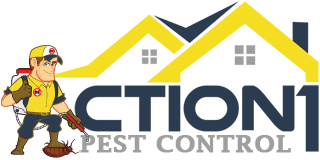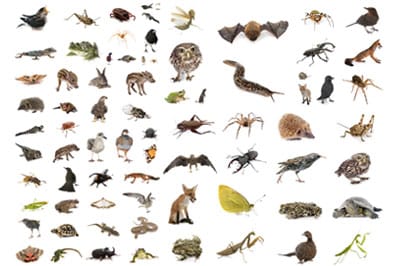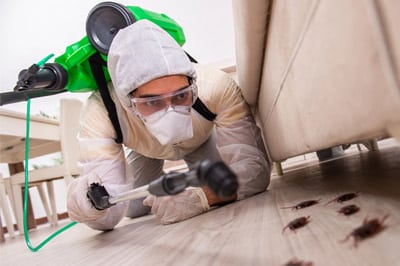Cockroach Control and Extermination Services
Call Us Today- Home
- »
- Pest Control
- »
- Cockroach Exterminator
Effective cockroach control requires a combination of identification, prevention, sanitation, and targeted treatment methods to eliminate existing populations and prevent future invasions. We understand that finding the right approach can feel overwhelming when you’re dealing with these resilient pests.
We’ll walk you through proven strategies for detecting cockroach activity, securing your home against entry points, maintaining conditions that discourage infestations, and implementing control methods that actually work. If you’re dealing with a current problem, we’ll help you create a cockroach-free environment using our professional intervention.
Highly Trusted Cockroach Control Company

High Quality Services

Affordable & Upfront Pricing

Emergency Same Day Service
Identifying Cockroach Infestations
Recognizing Signs
Cockroach droppings vary by species but generally appear as small, dark specks. German cockroaches leave droppings that resemble black pepper or coffee grounds. American cockroaches produce larger, blunt-ended droppings about the size of rice grains.
Smear marks appear on walls and surfaces where cockroaches travel frequently. These dark, irregular stains occur when roaches brush against surfaces with their oily bodies.
Egg casings (oothecae) are brown, oval-shaped capsules that contain multiple eggs. German cockroach egg cases are small and tan-colored, while American cockroach cases are larger and reddish-brown.
A musty odor becomes noticeable with larger infestations. Oriental cockroaches produce particularly strong, unpleasant smells due to their preference for decaying organic matter.
Shed skins from molting cockroaches accumulate in hiding areas. These translucent casings are often found near food sources and water.
Common Hiding Places in Homes
German cockroaches particularly favor warm appliances like toasters, coffee makers, and refrigerator motors. They squeeze into tight spaces between appliances and countertops.
Bathrooms provide the humidity cockroaches need. Check behind toilets, under vanities, around pipes, and in shower areas. Oriental cockroaches often emerge from floor drains.
Basements and crawl spaces house American cockroaches and Oriental cockroaches. These species prefer cooler, damp environments away from main living areas.
Electrical equipment attracts brown-banded cockroaches. We discover them inside televisions, computers, and other electronics that generate heat.
Cracks and crevices throughout the home serve as highways. Cockroaches travel through wall voids, behind baseboards, and around door frames.
Cockroaches can compress their bodies to fit through spaces as narrow as one millimeter. This flexibility allows them to access tight crevices between walls, under baseboards, and inside equipment.
Differences Among Species
German cockroaches represent the most frequent indoor pest. They measure about 0.5 inches long and prefer warm, humid areas like kitchens and bathrooms.
American cockroaches are the largest household species, reaching up to 3 inches in length. We sometimes call them palmetto bugs in southern regions.
Key Indoor Species:
| Species | Size | Preferred Location | Lifespan |
|---|---|---|---|
| German | 0.5 inches | Kitchen, bathroom | 6-9 months |
| American | Up to 3 inches | Basements, sewers | 1-2 years |
| Oriental | 1 inch | Cool, damp areas | 6 months |
| Brown-banded | 0.5 inches | Warm, dry locations | 5-6 months |
Each species exhibits distinct behaviors and habitat preferences. Understanding these differences helps us identify which cockroach we’re dealing with during an infestation.
Our 5 Step Pest and Cockroach Control Process

Preventing Cockroach Entry
Sealing Entry Points Effectively
Caulk is our primary tool for sealing gaps around pipes, electrical outlets, and baseboards. Use silicone-based caulk for areas exposed to moisture, such as bathrooms and kitchens. Steel wool combined with caulk works best for larger gaps that cockroaches might exploit.
Focus on these critical areas:
- Gaps around plumbing fixtures
- Cracks in walls and foundations
- Spaces around electrical conduits
- Door and window frames
- Ventilation openings
Weather stripping prevents cockroaches from entering under doors. Install door sweeps on exterior doors, ensuring no gaps remain at the bottom.
Inspect and seal areas where utilities enter your home. Cockroaches often use these pathways to move between walls and living spaces.
Storing Food and Water Safely
Transfer all dry goods into sealed glass or plastic containers immediately after purchase. This includes cereals, flour, sugar, pet food, and snacks. Cardboard packaging offers no protection against cockroaches.
Store opened items in the refrigerator when possible. Keep fruits and vegetables in sealed containers rather than leaving them exposed on counters.
Food and water sources must be controlled beyond just storage:
- Clean up crumbs and spills immediately
- Wipe down surfaces after food preparation
- Empty garbage cans regularly
- Fix leaking faucets and pipes promptly
Pet food requires special attention. Store dry pet food in sealed containers and remove uneaten wet food within 30 minutes of feeding.
Reducing Indoor Moisture
Fix all plumbing leaks immediately, including dripping faucets, running toilets, and pipe connections. Even small amounts of standing water attract cockroaches.
Use exhaust fans in bathrooms and kitchens during and after activities that create steam. Proper ventilation prevents condensation buildup that cockroaches need.
Key moisture reduction steps:
- Clean and dry sinks completely after use
- Repair damaged caulking around tubs and showers
- Use dehumidifiers in basements and crawl spaces
- Ensure proper drainage around your home’s foundation
Address condensation on pipes by installing insulation. This prevents water droplets that could sustain a cockroach problem.
Empty and clean pet water bowls before bedtime. Replace the water daily to prevent stagnation that attracts pests.
Sanitation and Home Maintenance
Maintaining Clean Surfaces
Kitchen surfaces require immediate attention after food preparation. We should wipe down countertops, stovetops, and cutting boards with disinfectant solutions. Behind appliances often harbor hidden food debris that cockroaches seek.
Bathroom surfaces need regular disinfection to eliminate moisture and organic matter. We must clean around sinks, toilets, and shower areas where cockroaches find water sources.
Floor maintenance involves daily sweeping and weekly mopping with appropriate cleaners. Pay special attention to areas under furniture and appliances where cockroach droppings commonly accumulate.
We should use steam cleaning periodically to eliminate bacteria and organic residues that standard cleaning might miss. This method effectively removes microscopic food particles that attract cockroaches.
Waste Management Best Practices
Daily waste removal prevents organic matter from decomposing and attracting cockroaches. Kitchen garbage should never remain overnight, as food scraps create ideal feeding conditions.
We should line all waste containers with plastic bags and clean the interior containers weekly with disinfectant. This removes residual odors and sticky substances that attract pests.
Recycling materials require rinsing before storage. Cans, bottles, and food containers must be completely clean to avoid attracting cockroaches to recyclable items.
Outdoor waste storage areas need regular cleaning and should be positioned away from building foundations. We must ensure garbage bins have secure lids and repair any damage that allows pest access.
Cockroach Control Methods
Sticky Traps for Monitoring and Control
We place sticky traps in high-activity areas like under sinks, behind appliances, and along walls where cockroaches travel. The traps help us identify infestation levels and track cockroach movement patterns throughout the home.
Key placement locations include:
- Kitchen corners and cupboards
- Bathroom areas near plumbing
- Behind refrigerators and stoves
- Along baseboards in infested rooms
Sticky traps work best for monitoring rather than elimination. They catch individual cockroaches but won’t eliminate entire populations.
We recommend checking traps every few days and replacing them when full. The number of captured insects indicates infestation severity and helps determine if other control methods are working effectively.
Using Gel Baits and Bait Stations
We apply gel bait in small amounts directly into cracks, crevices, and areas where cockroaches hide. Popular active ingredients include fipronil and imidacloprid, which disrupt the nervous system of cockroaches.
Bait stations provide contained gel bait applications that protect the poison from children and pets. These plastic devices hold gel bait inside tamper-resistant housings.
Application guidelines:
- Apply pea-sized amounts every 12 inches
- Focus on areas behind appliances
- Target cracks along cabinets and walls
- Avoid spraying insecticides near bait areas
The poisoned cockroaches often die in their nests, potentially affecting other colony members. We replace gel baits every 2-3 months or when they dry out completely.
Boric Acid and Diatomaceous Earth Treatments
We dust boric acid powder in thin layers under appliances, behind cabinets, and in wall voids. When cockroaches walk through the powder, it clings to their bodies and kills them through dehydration and internal poisoning.
Diatomaceous earth works similarly as a desiccant but uses fossilized algae particles. The microscopic sharp edges damage cockroach exoskeletons, causing fatal water loss.
Application methods:
- Use a light dusting rather than thick piles
- Apply with a bulb duster for even coverage
- Focus on areas where cockroaches hide
- Reapply after cleaning or moisture exposure
We keep these powders away from children and pets, as boric acid can be harmful if ingested in large quantities. Both treatments take several days to show results.
Natural Repellents and Essential Oils
We mix 10-15 drops of essential oils with water in spray bottles for application around cockroach-prone areas. The oils mask scent trails that cockroaches use for navigation.
Effective natural repellents include:
- Peppermint and eucalyptus oils
- Bay leaves placed in cupboards
- Cedar blocks near entry points
- Citrus peels around problem areas
These methods work best as preventive measures rather than elimination tools. We reapply oil sprays weekly since the scents fade quickly.
Natural repellents won’t kill existing infestations but help prevent new cockroaches from entering treated areas. We combine these methods with other control strategies for comprehensive management.

Why Hire Our Team
Our professional exterminators use specialized chemicals and techniques that deliver faster, more comprehensive results than DIY methods. Knowing when to call us and understanding our service process helps ensure effective cockroach treatment for your property.
We recommend calling our professional exterminators at the first sign of cockroach activity. Early intervention prevents small problems from becoming major infestations that are more expensive and time-consuming to resolve.
Call us immediately if you notice:
- Multiple live cockroaches during daylight hours
- Black specks (droppings) near kitchen areas or cabinets
- Strong, musty odors in closed spaces
- Egg cases or shed skins in dark corners
Large infestations require professional-grade chemicals like hydramethylnon and fipronil that aren’t available to consumers. These substances work faster than store-bought products and target entire colonies rather than individual insects.
Professional pest control becomes essential when DIY methods fail after two weeks of consistent application. We’ve found that homeowners often underestimate infestation severity or apply treatments incorrectly.
Our professional cockroach treatment begins with species identification since different cockroaches require different approaches. German cockroaches need different chemicals than American or Oriental species.
The typical service process includes:
- Property inspection to locate nests and entry points
- Application of gel baits, sprays, or boric acid treatments
- Sealing of cracks and potential entry points
- Follow-up visits to monitor progress
Expect to see increased roach activity immediately after treatment as insects try to escape the chemicals. Dead cockroaches may appear within 24-48 hours, though most die in their nests.





